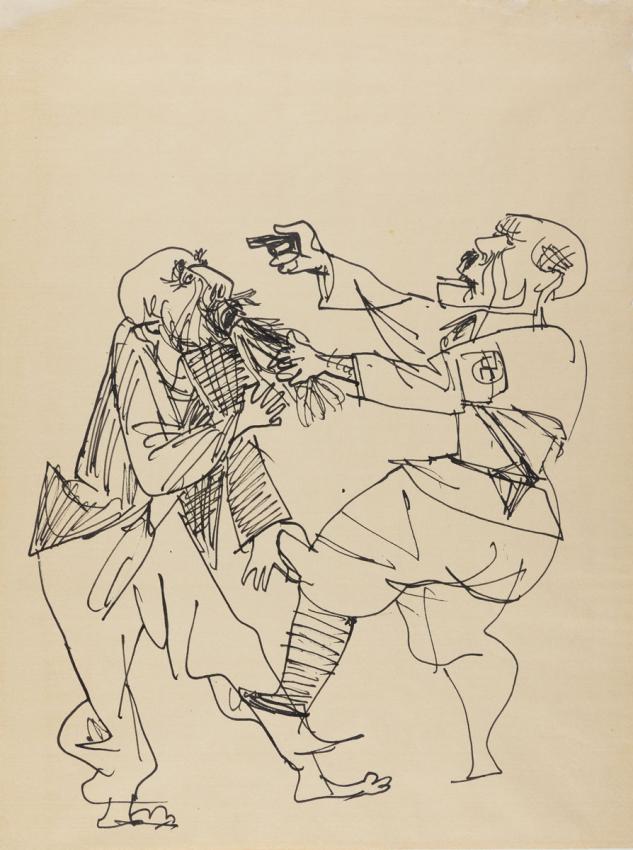In the work depicted here, the artist presenting in a grotesque and expressive manner the cruelty the Jews suffered with the rise of the fascist regime in Romania. Janco himself felt this violence: his brother-in-law was murdered, his friends alienated themselves from him, and, like all other Jewish artists, he was prevented from exhibiting his art.
Marcel Janco (1895–1984)
Born in Bucharest. As a teenager, Marcel Janco studied painting with the artist Iosif Iser. At secondary school he joined a student group that published an avant-garde journal for literature and art. In 1915, he traveled to Zurich to study architecture at the Swiss Federal Institute of Technology. During his studies together with his friend Tristan Tzara, he was among the founders of the Dada art movement. In 1922, after a year in Paris, Janco returned to Romania, where he was active as an architect, painter, and leader of the Romanian avant-garde. In 1940, following rising antisemitism, persecution of Jews in Romania, and the Bucharest pogrom, Janco and his family immigrated to the Land of Israel. He was among the founders of the Ein Hod artists’ village and the New Horizons group of artists. He taught art and exhibited in numerous shows. In 1967, Janco was awarded the Israel Prize in art, and in 1983 the Janco-Dada Museum was inaugurated in Ein Hod.




